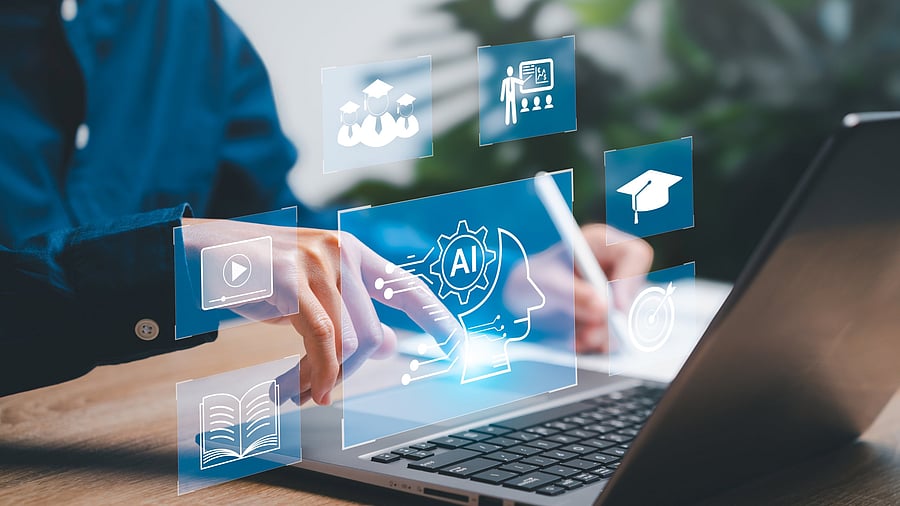
Education technology and AI Artificial Intelligence concept,
Credit: iStock Photo
AI (Artificial Intelligence) is becoming the buzzword across domains including education. With Covid-19, teachers and students from even remote parts of the country made the switch to online teaching-learning. A simple smartphone with internet access opened up a range of possibilities in terms of technology-integrated teaching-learning. The potential and reach of AI in education have expanded continuously since reshaping the way students learn, and teachers instruct.
AI technology can self-train, adapt, and scale in ways that traditional educational technology cannot. It can learn and improve its intelligence over time by analysing large amounts of real-time data related to student learning patterns. By identifying individual students’ strengths and weaknesses, AI can adjust in real-time to provide each student tailored learning experience. It can also manage a large number of students simultaneously and scale up activities like providing quizzes and offering personalised feedback. The utility of AI-enabled ed tech is evident. However, there is also widespread fear and scepticism regarding its impact on restricting children’s creativity; replacing the teacher’s role; increasing cases of plagiarism; and encouraging assessment malpractices. While all these concerns are valid, in the future as technology continues to evolve, it is important for educators to navigate certain principles and policies to effectively utilise AI to their benefit.
The use of AI in education is a grey zone, at present. There is an imminent need to understand what kind of knowledge and skills could be safely automated using AI and what should remain strictly within the purview of classroom teaching-learning. As a teacher, how would you treat a presentation on global warming by a student that is completely generated by an AI software? The skill of analysing, synthesising and organising information has been automated using AI; however, the skill of presenting and explaining is being exhibited by the student. If the same student was to write about the issue of global warming in a closed book exam such as the boards, how well-equipped is the student to analyse, synthesise, and organise information in that limited time? So, the question here is as educators, do we have clarity on why certain knowledge, capacities, values, and dispositions are non-negotiable in terms of automation v/s a few others that can be automated purely from an efficiency point of view e.g. gamifying the content for learning; generating a relevant image for a project; creating a detailed reference list, or brainstorming on a topic.
The primary purpose of educational assessments is to understand and track how effectively students have mastered the necessary competencies. Now, with AI-enabled learning in the picture, how much of this mastery is a result of independent thinking by students and how much of it is based on assistive technology might be impossible to differentiate soon. Does this mean AI is completely evil and needs to be evicted from the education system? The answer is not that simple. This would require a much more organised and concrete effort to understand how well students can authenticate their learning and how productively are teachers able to use this assistive technology in their favour. A few principles need to be in place to ensure the same.
Balance is the way forward
Comprehensive school-level policies and guidelines should be co-created to ensure a shared understanding among students on what level of AI usage is permissible and what is considered out of bounds. Initially, this will involve having strict monitoring procedures in place e.g. maintaining drafts of their work and furnishing evidence of their original work as needed.
Teachers should be encouraged to and capacitated in utilising AI as their pedagogic assistant. Routine tasks such as designing assessment tools, automating grading for objective-type tests, creating detailed grading rubrics, and maintaining performance records can be easily automated using AI. While many routine processes could be offloaded to AI, there should be a proportionate increase in classroom-based assessments undertaken by the teacher in the form of oral discussions, role plays, practical demonstrations, field visits etc. This can serve as an effective way of triangulating evidence of student learning between teacher-led and AI-led assessments.
The growth of AI cannot be accurately estimated due to its potential to self-train. Moving forward, we need to create more opportunities and spaces where we can mutually learn, understand, and navigate this new normal of AI-led education.
(The writers are faculty members at Azim Premji University, Bengaluru)